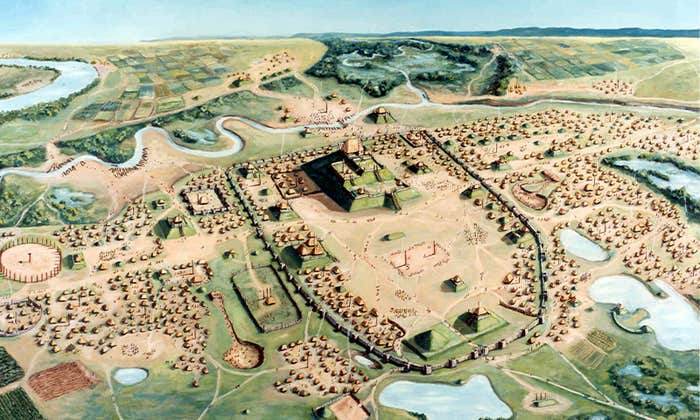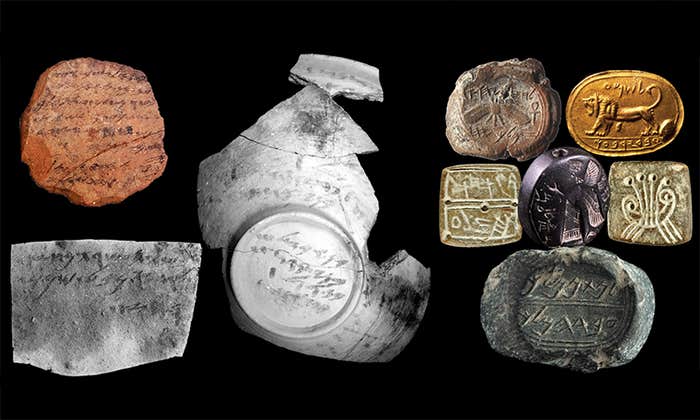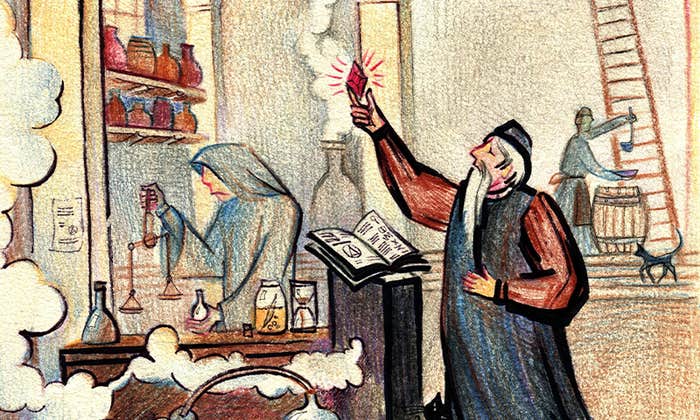Heads down, we plodded along a coastal path into an almost gale-force wind that came howling straight up the English Channel, driving the rain into our faces and making it hard to steal more than an occasional glance ahead of us to the west. Somewhere up there was Durdle Door, a spectacular natural arch over the sea and our first destination for today. For now, however, it was all we could do to make out a curve of white limestone cliffs facing out to sea.
Still, even this exceptionally rainy day in a record-breakingly wet English summer only added to our sense of adventure. Along with my wife, Harvard University historian of science Anne Harrington, I was co-leading 15 students from the Harvard Summer School study abroad program on an exploration of England’s Jurassic Coast: a near-100-mile stretch of rocks and fossils that had been a major inspiration for the founders of historical geology some two centuries ago.
Few landscapes on the planet are more open to scientific inspection. As if for the convenience of geologists, the rocks of the Jurassic Coast are laid out in an almost unbroken sequence that runs from the early Triassic period, some 250 million years ago, to the twilight of the dinosaurs in the late Cretaceous period, roughly 65 million years ago. Walking westward, as we were doing, is like journeying further and further back through an estimated 185 million years of deep time.
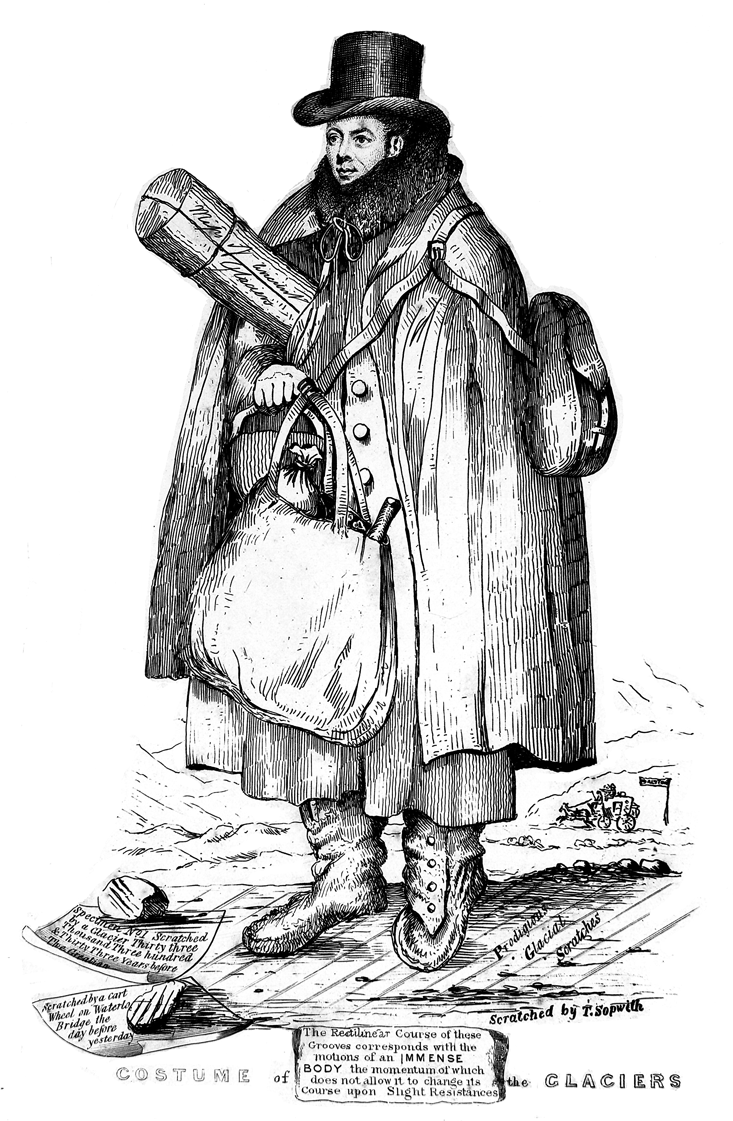
The fossil-hunters and naturalists who pored over the Jurassic Coast in the early 19th century were awestruck by this orderly sequence of sedimentary rocks, suggestive of an almost endless series of changes in this one place on earth. And they were equally entranced by the extraordinary fossils that they pulled out of the cliffs and rock falls. Here were plants and animals like nothing seen today, including fish-like reptiles dubbed ichthyosaurs and flying reptiles known as pterodactyls. All testified to radically different forms of life that had come and gone over the course of unimaginable ages. Writing in 1836, one of the leading geologists of his day, the Reverend William Buckland of the University of Oxford, warned his readers that some of what he was about to describe was “much more like the dreams of fiction and romance, than the sober results of calm and deliberate investigation.”
I have always had a soft spot for Buckland and the other clerical naturalists who walked this coast in the 1820s and 1830s. As a historian of evolutionary biology and director of the Massachusetts Institute of Technology Museum, I have come a long way from my own upbringing as an evangelical Christian. Yet I retain a broadly Christian sensibility that leads me to admire their quest for a unified understanding of the world, based on insights from what they took to be all of the relevant sources—which included not just fieldwork, measurement, and close observation of their rocks and fossils, but scripture. Their philosophy of “natural theology” is one that many people would find hard to fathom today, when science and religion are so often viewed as irreconcilable adversaries. But this philosophy treated the world of nature as “the book of God’s works,” waiting to be harmonized with the better-known “book of God’s words.”
This “two books” idea allowed Christian naturalists of many different persuasions (conservative, liberal, evangelical, and none of the above) to work alongside one another in reasonable comfort; together, they assembled a history of life on earth that helped lay a solid foundation for all the geological work that came after. And in the process, not incidentally, they mentored many of the most important geologists of the next generation—including a young English naturalist named Charles Darwin.
Today the relationship between science and religion is not very healthy. In the public sphere there’s a widespread perception that the two are somehow in conflict, or at least in an uneasy standoff, and it often seems that a synthesis between knowledge and faith is neither possible nor even desirable. Still, as contemporary historians and interpreters of science, we can at least try to help our students understand that things were not always this way—that, as L.P. Hartley put it, “The past is a foreign country: They do things differently there.”
And that is why we brought our students to the Jurassic Coast—so that they could feel for themselves the sense of wonderment that greeted the cascade of new discoveries about the history of life on earth in the first half of the 19th century, and that helped shape the turbulent relationship between science and religion down to the present day. Our hope was that the Jurassic Coast would help our students find lessons for our far more divided age—that, whether theist, atheist, or agnostic, they might together experience the kind of awe that can bring anyone up short, and make them think that perhaps there is, after all, something more to be learned about our place in the universe.
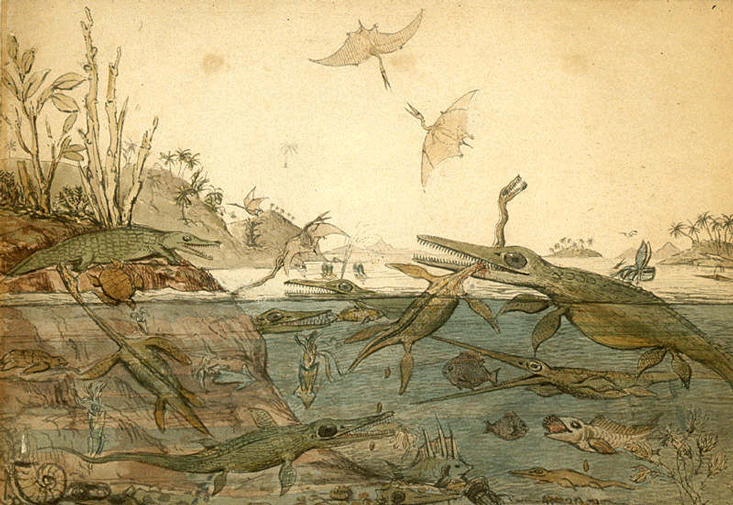
Buckland was born not far from the Jurassic Coast, as it happens. The son of an Anglican clergyman in Axminster in Devon, he avidly collected rocks and fossils as a boy. And when he followed in his father’s footsteps by going up to Oxford to study for the ministry, he happily combined his religious studies with his burgeoning scientific interests. He conducted increasingly ambitious fieldtrips on horseback, and soon amassed a remarkable array of geological and zoological specimens in his rooms at Oxford’s Corpus Christi College.
This storied university town was where Buckland conducted his most famous geological work. So, after we finally made it to Durdle Door, clambering down to view close up its spectacular almost vertical strata, we went off to a nearby pub to dry out over lunch and then headed north to Oxford.
Buckland was a colorful character at the university. Following his appointment as Reader in Mineralogy in 1813, he began to attract a big following—not least as an entertaining university lecturer. He was an energetic and effective lobbyist for the barely recognized subject of geology, arguing that it posed no threat to Christian belief. In 1819 he gave his inaugural lecture as Reader in Geology—a post endowed by the Prince Regent himself, at Buckland’s urging—and framed it as an extended argument in favor of accepting the new historical science. Everything about the lecture, from its use of Latin (title: Vindiciae Geologicae), to its overwhelming preoccupation with natural theology (subtitle: Or the Connexion of Geology with Religion Explained), was designed to placate his more conservatively minded academic colleagues.1
This argument was no mere political ploy, for Buckland’s belief that nature was the handiwork of God shaped all his geological work. For example, in detailed studies of some of the great fossil reptiles that had been pulled out of the Jurassic Coast by Mary Anning, dubbed “The greatest fossilist the world ever knew,” Buckland interpreted the clear signs of the animals’ carnivorous diet as evidence of a pre-ordained divine harmony, in which the numbers of predator and prey species were held in perfect balance.
And in 1832, Buckland rounded off the annual meeting of the British Association for the Advancement of Science in Oxford by entertaining his audience with another novel interpretation of an extinct monster: the Megatherium, or giant sloth. As big as a modern elephant and now known to have lived several million years ago, and to have gone extinct 11,000 years ago, the creature was still new to science—the first specimen had been discovered only in 1788—and was a puzzle. The renowned French anatomist Georges Cuvier, for whom Buckland had huge respect, had described the Megatherium as a rare instance of poor design in nature. The great beast’s front limbs appeared ill suited to conventional four-legged walking, Cuvier argued, and its claws seemed at best the clumsiest of weapons.
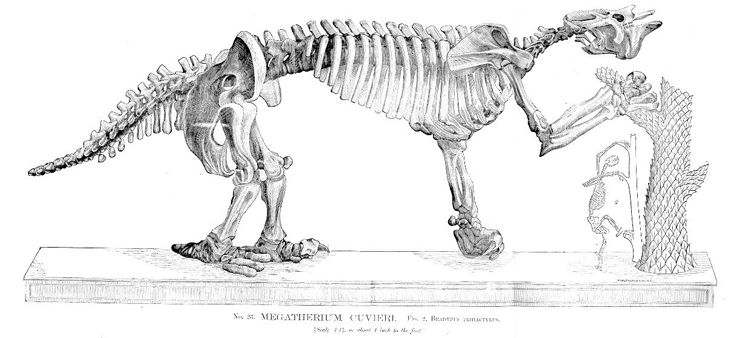
Yet Buckland, ever the natural theologian, was having none of this. In a typically bravura public performance, he used the comparative anatomical techniques that he’d learnt from Cuvier himself to offer a new interpretation of the Megatherium as a root-eating giant consummately well-suited to its life on the South American pampas:
Gentlemen, his teeth indicated a peculiarity of structure; they were not calculated to eat leaves or grass; they were not calculated to eat flesh; he was an eater of vegetables. What then remained for him but roots? He has a spade, and he has a hoe and a shovel in those three claws in his right hand… He is the Prince of sappers and miners. – I speak in the presence of Mr Brunel the Prince of Diggers.
(Here Buckland was scanning the distinguished crowd before him and calling out to Isambard Kingdom Brunel, then England’s most celebrated engineer.)
Mr Brunel eyes him [the Megatherium] and says, ‘I should like to employ him in my tunnel.’ ‘No’, say I, “he is not a workman for you; he is not a tunneller, he is a canal digger, if you please, so I pray you give him the first job you have to do!’ He will not go an inch below a foot and a half: he would dig a famous gutter; he would drain all Lincolnshire in the ordinary process of digging for his daily food.1
Buckland’s talk was, by all accounts, a tour-de-force—a triumphant demonstration of what clerical natural history at its best could accomplish. He and his fellow clerical naturalists were not merely scientists who happened also to be religious; rather, they were men who practiced a certain kind of theologically informed science. In their quest for a unified understanding of the world, they constructed an account of earth history that was both scientific, in that it integrated virtually all the empirical knowledge available to them; and theological, in that it explained that history in terms of Divine Providence. In his 1836 “Bridgewater Treatise,” Geology and Mineralogy Considered with Reference to Natural Theology, Buckland expounded at length on the ways in which divine oversight had prepared the earth as a suitable environment for humankind—right down to the geographical disposition of coal, iron ore, and limestone in the British Isles in ways suited to the needs of English capitalists.2
Similar themes were being sounded by Buckland’s counterpart at the University of Cambridge, the Reverend Adam Sedgwick. As the Woodwardian Professor of Geology there, Sedgwick had made significant contributions to historical geology in his own right, helping to establish the Cambrian and the Devonian periods of earth history. At another British Association annual meeting—this time in Newcastle, in the northeast of England—he addressed some three or four thousand coal miners in an impromptu outdoor lecture on nearby Tynemouth beach. In the words of the eminent astronomer Sir John Herschel, Sedgwick led the miners “from the scene around them to the wonders of the coal-country below them, thence to the economy of a coal-field, then to their relations to the coal-owners and capitalists, then to the great principles of morality and happiness, and last to their relation to God, and their own future prospects.”3
True, this eagerness to reconcile science with traditional Christian teachings sometimes led the clerical naturalists astray. In the 1820s, for example, Buckland, Sedgwick, and many others happily endorsed the idea that the “diluvial” deposits found around the globe were direct physical evidence of Noah’s Flood. (Today these deposits are known to be the result of catastrophic floods dating back to the ice age, tens of thousands of years ago.) Nonetheless, when the balance of evidence eventually suggested that the Noachian interpretation was wrong, the clerical naturalists were quick to recant. “We ought, indeed, to have paused,” Sedgwick confessed in his Presidential Address to the Geological Society of London in 1831, “before we first adopted the diluvial theory.”4
This kind of sensitivity to evidence is not, perhaps, what many today expect from religiously minded scientists. However, many historians of science now argue that natural theology served important and positive functions in the first half of the 19th century.5, 6 Perhaps most important, it encouraged an approach to the study of nature that took change and organic adaptation seriously—and in the process, drew on sacred and secular history for many of its most powerful interpretive metaphors and similes.7, 8
That approach, in turn, led the clerical naturalists to a “progressivist synthesis” that still lies at the foundation of modern geology and paleontology. This synthesis encompassed three key ideas. First, there is an orderly arrangement of sedimentary rocks on the surface of the earth—a universal historical sequence known today as the geological record. Second, each distinctive layer in this column is characterized by equally distinctive forms of life, with deeper and older rocks containing simpler, less familiar forms, and more superficial and younger rocks containing more complex, more familiar forms. And third, this fossil record could be used to reconstruct not merely the natures of individual plant and animal forms, but also—and often in impressive detail—the nature of the different ecosystems, and hence of the different environmental conditions that had prevailed on the earth over the unimaginably long course of deep time.
These were not small contributions. And yet, by mid-century the kind of natural theology practiced by Buckland, Sedgwick, and their contemporaries began rather rapidly to fall out of favor. Partly this was due to a firestorm of protests from traditional religious thinkers. In 1833, for example, about a year after Buckland’s Megatherium lecture, his university became caught up in the “Oxford Movement”: a set of largely conservative theological and religious reforms that chilled the political climate for his rather different reform efforts. As conservatives like John Keble and John Henry Newman set out to reinstate the traditional authority and teachings of the church, they increasingly lashed out against natural theology, which deliberately cut across religious party-political lines through its heavy reliance on reason and evidence for support of Christian principles.
Buckland’s efforts to advance science at Oxford proved to be no match for the conservative opposition. By 1845, he was so discouraged that he accepted the Deanery of Westminster and the living of Islip, a small parish a few miles outside Oxford. He continued to teach at the university, but these appointments marked his retreat from its academic and political life. In 1847, Buckland turned down an invitation to add his name to a list of supporters for a new Museum of Natural History at Oxford—a project he had once lobbied for enthusiastically, seeing the museum as a natural home for his ever-growing collections. “Some years ago,” he replied to the invitation, “I was sanguine, as you are now, as to the possibility of Natural History making some progress at Oxford, but I have long come to the conclusion that it is utterly hopeless.”9 Buckland died in Islip in 1856, having taken no further part in his colleagues’ efforts to create the new museum.
Not long afterward, natural theology also came under attack from the other side, from a generation of distinctly more secular scientists who were commonly dubbed “scientific naturalists.” The trigger was the 1859 publication of On the Origin of Species—the book in which Charles Darwin laid out his altogether more secular account of how organisms could evolve by natural selection, without apparent need of divine guidance. In the decades that followed, Darwin’s friend and advocate Thomas Huxley took particular pleasure in ridiculing clerics: “Extinguished theologians,” he pronounced in 1860, “lie about the cradle of every science as the strangled snakes beside that of Hercules.”10 Before long, Huxley’s contempt was being echoed by many other Darwinists. “We claim,” declared John Tyndall, a physicist and the president of the British Association for the Advancement of Science in 1874, “and we shall wrest from theology, the entire domain of cosmological theory.”11
There is a historical irony, however. Buckland’s once-longed-for Museum of Natural History was eventually built—the cornerstone was laid in 1855—and was nearing completion in the summer of 1860, when the British Association for the Advancement of Science was due, once again, to visit Oxford. Origin of Species had just come out the previous autumn, and “Mr. Darwin’s Hypotheses” were the talk of the town, so the Association booked a room in the new museum for a debate on the subject.
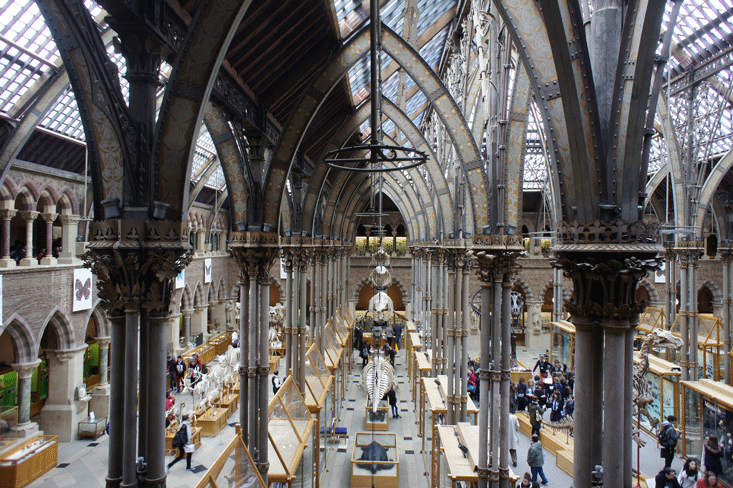
That debate, on June 30, 1860, has become legendary in the history of science. Among Darwin’s supporters was the young Huxley, while his detractors included Bishop of Oxford Samuel Wilberforce. Although no transcript of exactly what they said has ever come to light, the clash between these two has come to symbolize what many people—then and now—take to be the inevitable conflict between the new science and the old religion.12, 13, 14, 15, 16
The irony is that the museum that housed the debate is a monument to natural theology’s vision of unity. The advocates who took up the museum’s cause after Buckland stepped away prevailed only by doggedly reiterating his original argument—that the scientific study of nature was not merely compatible with, but genuinely supportive of, true religion. They even wove that message into the new museum’s design, employing a gothic style that was deemed peculiarly appropriate for combining the secular and the sacred. A prime example was the museum’s entrance portal, which was supposed to be richly decorated with carvings that evoked the wonders of the natural world, but that also featured Adam and Eve in a symbolic Garden of Eden presided over by the Angel of Life. “Surely, where nature is to be enshrined,” argued one architect, “there especially ought every carved stone and every ornamental device to bear her marks and to set forth her loveliness.”17
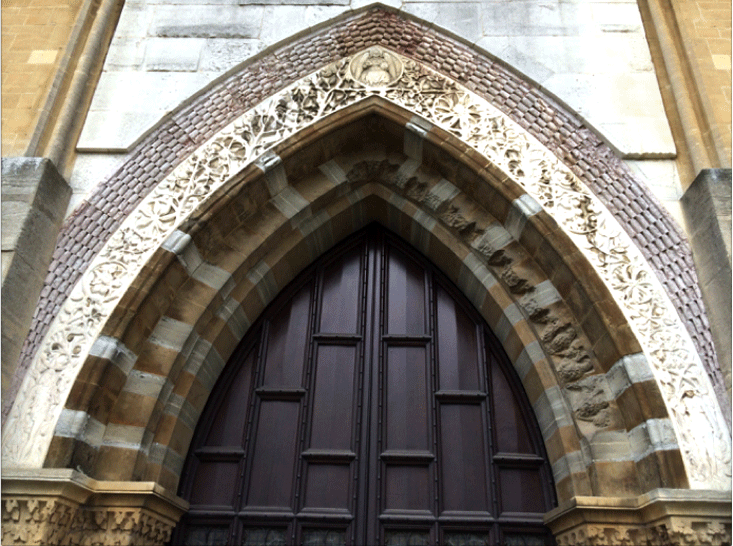
That’s why the museum was one of the main things we wanted to see during our visit to Oxford. The storms of the previous day had passed, and we arrived on a bright summer morning to find an imposing building on Parks Road, in the heart of what is now the university’s flourishing science area. Entering through a central gothic archway, we were soon staring up at the glass roof of the central courtyard, surrounded by five ornate cast-iron arcades that house the main exhibits—including, naturally, a series of cases displaying highlights of Buckland’s work. On the way in, we had seen where the reality fell short of the original vision: By the time the museum’s construction funds ran out in 1861, fewer than half of its exterior carvings had been completed. Yet even so, with its cloistered gothic design and elaborate decorations, the museum does indeed looked like a cathedral to nature and nature’s God—“a Bridgewater Treatise in Stone and Iron,” as one of our students, Chloe Costello, put it.
There is no way to know whether anyone who attended the 1860 debate between Huxley and Wilberforce noted the irony of such a clash taking place in such a discordant setting. Perhaps not: The vision of scientific and religious unity embodied in the building seems to have been lost and rather quickly forgotten in the haste to take sides that day, and for many days thereafter.
Our tour of the Oxford University Museum helped us see the strength of a tradition of natural theology that enabled a generation of clerical naturalists to integrate their discoveries in historical geology with their deepest beliefs about God, nature, and humankind. In the end, it’s true, they failed to secure this synthesis—but only because a rising generation, unable to see the God of nature revealed in the rocks and fossils quite as clearly as their predecessors had done, aspired instead to be free from what they took to be the meddling influence of the clergy in matters scientific.
We live today with the consequences of this historic failure. For a century and more, we’ve been locked into a bitter, apparently never-ending argument between those who wish to reduce the human condition to the terms of secular science, and those who prefer to recover the human and the spiritual by wholesale rejection of secular science. This is a standoff that would have astonished Buckland and his fellow clerical naturalists, who did not believe they had to choose between science and scripture.
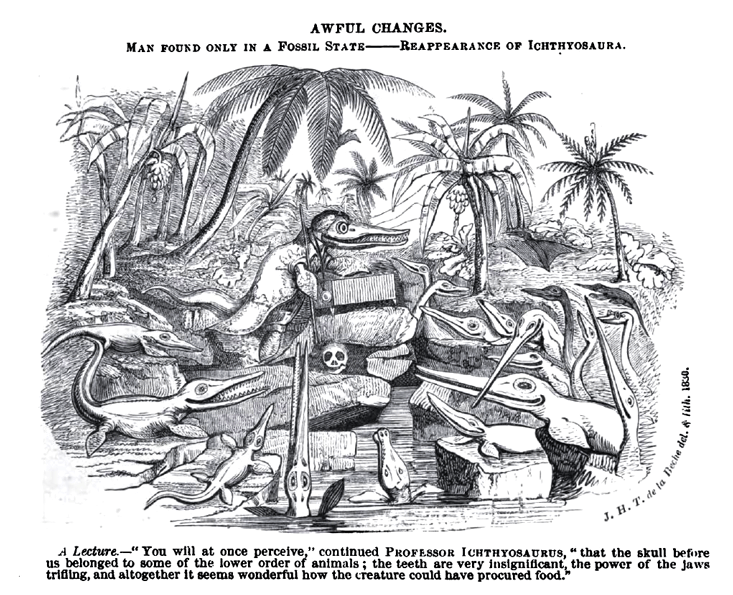
Buckland would have been appalled by the pretensions of contemporary young “Earth Creationists” like Kentucky Creation Museum Founder Ken Ham, who claim that the history of life on earth can simply be read out of scripture with no regard for the findings of science. Equally, he would have been horrified by the prognostications of so-called “New Atheists” like Oxford evolutionary biologist Richard Dawkins, who insist that the findings of science leave no room for religion.
Interestingly, Dawkins is very frank about his own experience of awe and wonderment in face of nature. Indeed, his 2013 autobiography is called An Appetite for Wonder. Here, if we choose to take it, is a way out of the apparently intractable conflict between the advocates of anti-scientific religion and anti-religious science. For a sense of wonder before the spectacle of nature’s “Awful Changes” (see cartoon above) is surely something that all honest observers of the history of life can share.
The clerical naturalists were the first generation to unearth this spectacle. Perhaps it’s time that our culture got over its ill-assorted anti-clerical and anti-scientific prejudices, and recaptured instead something of that larger and more generous view that these naturalists achieved in the 1820s and 1830s—and that is still today, even through driving rain, clearly visible from Durdle Door.
John Durant is the director of the Massachusetts Institute of Technology Museum and an adjunct professor in the program in Science, Technology & Society at MIT.
Acknowledgment
I am grateful to Hugh Torrens, who kindly gave up several days to introduce me to the geology of the Jurassic Coast, on which he is a considerable expert; to Jim Moore, who commented on an earlier version of this manuscript; and to my wife, Anne Harrington, with whom I conducted the Harvard Summer School Abroad that was the inspiration for this essay.
References
1. Rupke, N. The Great Chain of History: William Buckland and the English School of Geology (1814-1849) Oxford University Press, New York, NY (1983).
2. Buckland, W. Geology and Mineralogy Considered with Reference to Natural Theology William Pickering, London (1836).
3. John Herschel in a letter to his wife on Aug. 7, 1838; reprinted in Clark, J.W. & Hughes, T.M. (Eds.), The Life and Letters of Adam Sedgwick Cambridge University Press, New York, NY (1890).
4. Sedgwick, A. Address to the Geological Society. Proceedings of the Geological Society of London 1, 281-316 (1831).
5. Brooke, J.H. Science and Religion: Some Historical Perspectives Cambridge University Press, New York, NY (1991).
6. Brooke, J. & Cantor, G. Reconstructing Nature; the Engagement of Science and Religion Oxford University Press, New York, NY (1998).
7. Rudwick, M.J.S. Bursting the Limits of Time: The Reconstruction of Geohistory in the Age of Revolution Chicago University Press (2005).
8. Rudwick, M.J.S. Worlds Before Adam: The Reconstruction of Geohistory in the Age of Reform University of Chicago Press (2008).
9. Letter from Buckland to Henry Acland, Dec. 27, 1847; quoted in Rupke, N. The Great Chain of History: William Buckland and the English School of Geology (1814-1849) Oxford University Press, New York, NY (1983).
10. Huxley, T. “The Origin of Species” (1860); in Collected Essays, Volume II, Darwiniana Macmillan, New York, NY (1893).
11. Tyndall, J. “The Belfast Address” (1874); in Tyndall, J. Fragments of Science Longmans, London (1879).
12. Lucas, J.R. Wilberforce and Huxley: A Legendary Encounter. The Historical Journal 22, 313-330 (1979).
13. Gilley, S. The Huxley-Wilberforce Debate: A Reconstruction; in Robbins, K. (Ed.), Religion and Humanism Wiley-Blackwell, Oxford, (1981).
14. Vernon Jensen, J. Return to the Wilberforce-Huxley Debate The British Journal for the History of Science 21, 161-179 (1988).
15. Gould, S.J. Bully for Brontosaurus: Reflections in Natural History W. W. Norton, New York, NY (1991).
16. Hesketh, I. Of Apes and Ancestors: Evolution, Christianity, and the Oxford Debate University of Toronto Press, Toronto (2009).
17. Blau, E. Ruskinian Gothic. The Architecture of Deane and Woodward, 1845-1861 Princeton University Press, Princeton, NJ (1982).
Lead image credits: Alistair Haimes / Getty Images





















